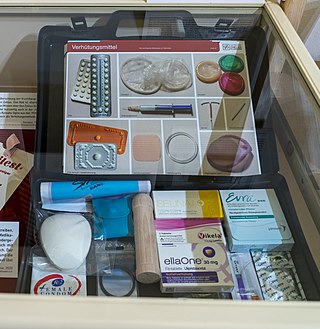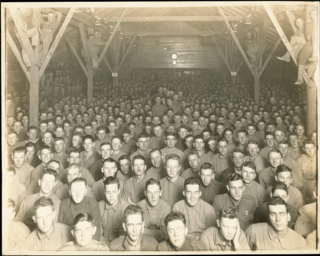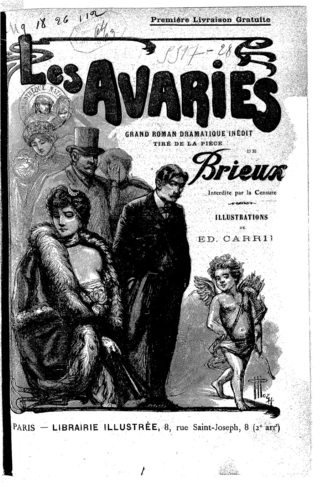
Syphilis is a sexually transmitted infection caused by the bacterium Treponema pallidum subspecies pallidum. The signs and symptoms of syphilis vary depending in which of the four stages it presents. The primary stage classically presents with a single chancre though there may be multiple sores. In secondary syphilis, a diffuse rash occurs, which frequently involves the palms of the hands and soles of the feet. There may also be sores in the mouth or vagina. In latent syphilis, which can last for years, there are few or no symptoms. In tertiary syphilis, there are gummas, neurological problems, or heart symptoms. Syphilis has been known as "the great imitator" as it may cause symptoms similar to many other diseases.

The sexual revolution, also known as the sexual liberation, was a social movement that challenged traditional codes of behavior related to sexuality and interpersonal relationships throughout the developed Western world from the 1960s to the 1970s. Sexual liberation included increased acceptance of sex outside of traditional heterosexual, monogamous relationships. The normalization of contraception and the pill, public nudity, pornography, premarital sex, homosexuality, masturbation, alternative forms of sexuality, and the legalization of abortion all followed.

Sex education, also known as sexual education, sexualityeducation or sex ed, is the instruction of issues relating to human sexuality, including human sexual anatomy, sexual activity, sexual reproduction, safe sex and birth control, sexual health, reproductive health, emotional relations and responsibilities, age of consent, and reproductive rights. Sex education that includes all of these issues is known as comprehensive sexuality education, and, especially in more puritan parts of the United States, is often opposed to abstinence-only sex education, which only focuses on sexual abstinence. Sex education may be provided as part of school programs, public health campaigns, or by parents or caregivers. In some countries it is known as "Relationships and Sexual Health Education".
Social guidance films constitute a genre of educational films attempting to guide children and adults to behave in certain ways. Originally produced by the U.S. government as "attitude-building films" during World War II, the genre grew to be a common source of instruction in elementary and high school classrooms in the United States from the late 1940s to the early 1970s. The films covered topics including courtesy, grammar, social etiquette and dating, personal hygiene and grooming, health and fitness, civic and moral responsibility, sexuality, child safety, national loyalty, racial and social prejudice, juvenile delinquency, drug use, and driver safety; the genre also includes films for adults, covering topics such as marriage, business etiquette, general safety, home economics, career counseling and how to balance budgets. A subset is known as hygiene films addressing mental hygiene and sexual hygiene.

Public health is "the science and art of preventing disease, prolonging life and promoting health through the organized efforts and informed choices of society, organizations, public and private, communities and individuals". Analyzing the determinants of health of a population and the threats it faces is the basis for public health. The public can be as small as a handful of people or as large as a village or an entire city; in the case of a pandemic it may encompass several continents. The concept of health takes into account physical, psychological, and social well-being.
Men who have sex with men (MSM) refers to all men who engage in sexual activity with other men, regardless of sexual identity. The term was created by epidemiologists in the 1990s, to better study and communicate the spread of sexually transmitted infections such as HIV/AIDS between all sexually active males, not strictly those identifying as gay or bisexual, but also for example male prostitutes. The term is often used in medical literature and social research to describe such men as a group. It does not describe any specific kind of sexual activity, and which activities are covered by the term depends on context. An alternative term, males who have sex with males is sometimes considered more accurate in cases where those described may not be legal adults.

An exploitation film is a film that tries to succeed financially by exploiting current trends, niche genres, or lurid content. Exploitation films are generally low-quality "B movies", though some set trends, attract critical attention, become historically important, and even gain a cult following.

The social hygiene movement in the United States was an attempt by Progressive era reformers to control venereal disease, regulate prostitution and vice, and disseminate sexual education through the use of scientific research methods and modern media techniques. Social hygiene as a profession grew alongside social work and other public health movements of the era. Social hygienists emphasized sexual continence and strict self-discipline as a solution to societal ills, tracing prostitution, drug use and illegitimacy to rapid urbanization. The movement remained alive throughout much of the 20th century and found its way into American schools, where it was transmitted in the form of classroom films about menstruation, sexually transmitted disease, drug abuse and acceptable sexual behavior in addition to an array of pamphlets, posters, textbooks and films.

Tropical medicine is an interdisciplinary branch of medicine that deals with health issues that occur uniquely, are more widespread, or are more difficult to control in tropical and subtropical regions.

Child prostitution is prostitution involving a child, and it is a form of commercial sexual exploitation of children. The term normally refers to prostitution of a minor, or person under the legal age of consent. In most jurisdictions, child prostitution is illegal as part of general prohibition on prostitution.

Bareback sex is physical sexual activity, especially sexual penetration, without the use of a condom. The topic primarily concerns anal sex between men without the use of a condom, and may be distinguished from unprotected sex because bareback sex denotes the deliberate act of forgoing condom use.

Mom and Dad is a 1945 American sexploitation film directed by William Beaudine, and largely produced by the exploitation film maker and presenter Kroger Babb. Mom and Dad is considered the most successful film within its genre of "sex hygiene" films. Although it faced numerous legal challenges and was condemned by the National Legion of Decency, it became one of the highest-grossing films of the 1940s.
The American Sexual Health Association (ASHA), formally known as the American Social Hygiene Association and the American Social Health Association, is an American nonprofit organization established in 1914, that cites a mission to improve the health of individuals, families, and communities, with an emphasis on sexual health, as well as a focus on preventing sexually transmitted infections and their harmful consequences. ASHA uses tools such as education, communication, advocacy and policy analysis activities with the intent to heighten public, patient, provider, policymaker and media awareness of STI prevention, screening, diagnosis and treatment strategies.
The outbreaks of sexually transmitted infections in World War II brought interest in sex education to the public and the government. During the late 1930s and early 1940s, military maneuvers increased worldwide and sexual hygiene and conduct became major problems for the troops. Soldiers and sailors on assignment overseas were often lonely, had time to spare, got homesick, or were just looking for female companionship. This resulted in many men having multiple sex partners, and as a result, became a major health concern. During the Great War, venereal diseases (V.D.) had caused the United States Army to lose 18,000 servicemen per day. Although by 1944, this number had been reduced 30-fold, there were still around 606 servicemen incapacitated daily. This drop in numbers was partly because of the Army's effort to raise awareness about the dangers faced by servicemen through poor sexual hygiene, and also because of the important developments in medicine. In late 1943, a case of gonorrhea required a hospital treatment of 30 days, and curing syphilis remained a 6-month ordeal. By mid-1944, the average case of gonorrhea was reduced to 5 days, and in many cases the patient remained on duty while being treated.

The End of the Road is a 1919 American silent drama film produced by the American Social Hygiene Association. The film was directed by Lieutenant Edward H. Griffith for the purposes of health propaganda. The plot follows the lives of two young women - one raised by "the right kind of mother" and the other by a mother that is judged to be wrong. This film was targeted at young women with warnings about premarital sex and venereal disease and was notably produced during World War I.

La Follette–Bulwinkle Act or Venereal Diseases Control and Prevention Act of 1938 sanctioned federal assistance to U.S. states establishing preventive healthcare for venereal diseases. The United States federal statute commissioned the United States Public Health Service for demonstrations, investigations, and studies as related to the control, prevention, and treatment of opportunistic infections. The public law amended the Army Appropriations Act of 1918 appending the judicial context which created the Division of Venereal Diseases within the Bureau of the Public Health Service.

The Chamberlain–Kahn Act of 1918 is a U.S. federal law passed on July 9, 1918, by the 65th United States Congress. The law implemented a public health program that came to be known as the American Plan, whose stated goal was to combat the spread of venereal disease.

The Commission on Training Camp Activities (CTCA), also popularly known as the Fosdick Commission, was an umbrella agency within the United States Department of War during World War I that provided recreational and educational activities for soldiers as they trained for combat. Established in April 1917, the CTCA had the mandate to keep American troops "physically healthy and morally pure", while also motivating them to fight.

Les Avariés is a 1901 play written by French playwright Eugène Brieux. Controversially, the play centred on the effect of syphilis on a marriage, at a time when sexually transmitted diseases were a taboo topic rarely openly discussed. For this reason, it was censored for some time in France and later in England.

Fit to Fight is a silent sex hygiene film about the dangers of venereal disease written and directed by Edward H. Griffith. It was produced by the Commission on Training Camp Activities and initially shown to American World War I soldiers. After the war, a slightly edited version was commercially released to the public in 1919, under the title Fit to Win. The film proved controversial due to its graphic imagery and its limited support for prophylaxis. It was subject to censorship attempts, and contributed to the emergence of the exploitation film as a distinct niche.















